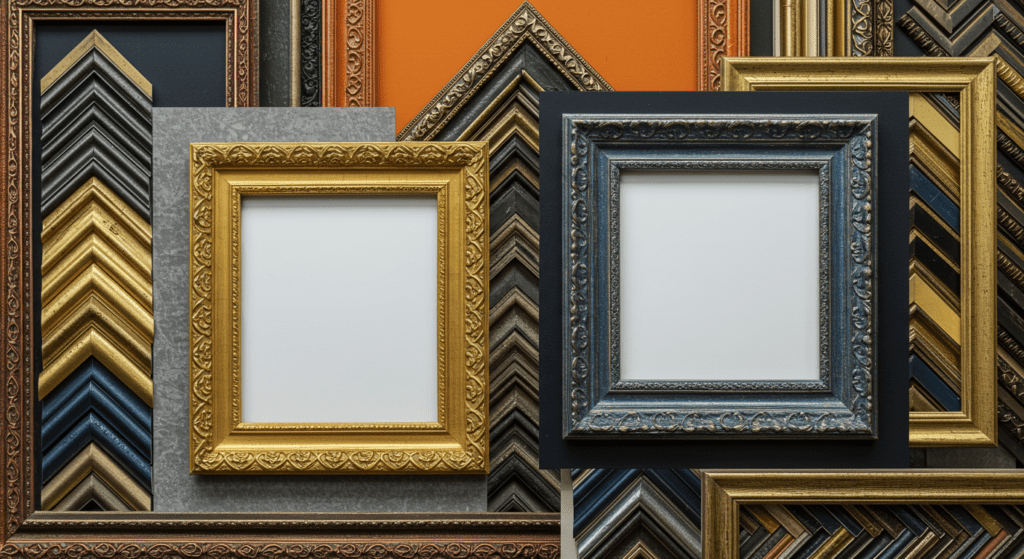Table of Contents
- Introduction
- Materials and Tools You’ll Need
- Mounting Techniques Explained
- Step-by-Step Guide to Building Your Custom Frames
- Conclusion
- FAQs
Introduction
If you’ve ever been intimidated by the cost of custom framing or the complexity of using power tools, you’re not alone. Framing your own artwork, especially pieces with unusual sizes or deep canvases, might seem like a daunting task. But with a few simple materials and the right techniques, you can create beautiful, personalized frames for your artwork—no power tools required!
In this guide, I’ll walk you through the process of building three different styles of custom frames: flush mount, recessed mount, and float mount. These are straightforward DIY techniques that can be accomplished without using a single power tool, making it perfect for beginners or those who prefer a more hands-on, low-fuss approach.

Materials and Tools You’ll Need
Before getting started, gather the following materials and tools. These are the essentials you’ll need for each style of frame.
Materials:
- Various pieces of wood (cedar, pine, or other preferred wood types)
- Wood glue
- Finishing nails or wire brads (depending on the thickness of your wood)
- Sandpaper
- Paint or wood stain (optional, based on preference)
Tools:
- Miter box saw
- Band clamp
- Various clamps
- Hammer
- Tape measure
- Pencil
- Paintbrush or rags for staining/painting
Mounting Techniques Explained
1. Flush Mount Frame
This style is one of the simplest to construct. It involves mounting the frame directly on the edge of your canvas, resulting in a clean and minimalist look. The frame fits closely to the artwork, making it ideal for larger pieces where you want the frame to complement the art rather than overwhelm it.
2. Recessed Mount Frame
A recessed mount uses a traditional technique where the artwork sits behind the frame, with a lip covering the edge. This is a great option if your canvas has unfinished edges, as it hides those imperfections while creating a clean, professional look.
3. Float Mount Frame
The float mount provides a unique, dimensional feel to your artwork. The frame is built to leave a small gap between the canvas edge and the frame, creating a “floating” effect. It’s particularly effective for gallery-wrapped canvases and adds an elegant, modern touch.
Step-by-Step Guide to Building Your Custom Frames
Flush Mount Frame
Materials:
- 1×2 cedar wood boards
- Wood glue
- Finishing nails
Instructions:
- Preparation: Start by measuring the dimensions of your canvas. Then, cut the cedar wood to size using the miter box saw. It’s always best to cut the pieces slightly longer than needed to account for any mistakes.
- Dry Fit: Lay the pieces of the frame against your artwork to check the fit. Use a band clamp to hold everything in place temporarily.
- Assembly: Once you’re satisfied with the fit, apply wood glue to the joints. Clamp the pieces together and allow the glue to dry.
- Final Assembly: Once the frame is dry, use finishing nails to secure the frame to the canvas stretcher. This adds extra stability and strength.
Recessed Mount Frame
Materials:
- 1/2×3” lumber for the outside piece
- 1/2×2” lumber for the middle piece
- 1/2” lumber for the inside edge
- 3/8×2” lumber for the top edge
Instructions:
- Staining: Stain your wood before beginning, especially if you want two tones for your frame. This ensures an even finish.
- Assembling the Frame: Glue together the outside edge piece with the middle and inside pieces. Clamp them securely while the glue dries.
- Measuring the Artwork: Once the frame is assembled, measure your artwork and leave a small buffer for a snug fit.
- Dry Fit and Final Assembly: Check the fit using the band clamp, ensuring it’s tight. Apply wood glue to the edges and clamp the frame again. Nail the frame in place after the glue has dried.
Float Mount Frame
Materials:
- 1/2×2” lumber (painted white)
- 1/2″ square dowel (stained dark)
Instructions:
- Building the Frame: Start by gluing the bottom piece of the frame to the side pieces. Make sure to wipe off any excess glue immediately.
- Creating the Float Space: For the float effect, ensure your frame is slightly wider than the canvas. This creates the gap between the canvas and the frame.
- Assembly and Mounting: Once the frame is assembled, carefully fit your canvas into the frame, ensuring even gaps around the artwork. Use a hammer to nail the frame to the canvas stretcher from the back, securing it in place.
Conclusion
Creating your own custom frames doesn’t need to be expensive or complicated. By following these simple steps, you can frame any piece of art with minimal effort and no power tools. Whether you choose a flush, recessed, or float mount style, you’ll have a professional-looking result that enhances your artwork and saves you money!
With the right materials and a bit of patience, you’ll be framing artwork like a pro in no time.
FAQs
Q: Do I need to use power tools to make these frames?
A: No, none of the methods outlined require power tools. You’ll only need hand tools like a miter box saw and a hammer.
Q: What type of wood is best for framing?
A: Cedar and pine are great options, as they are easy to work with and readily available. You can also use other woods depending on the look you want to achieve.
Q: Can I use these methods for different sizes of artwork?
A: Absolutely! Just measure your artwork carefully and adjust the frame sizes accordingly.
Q: What if I make a mistake while cutting?
A: It’s always a good idea to cut the wood a bit longer than needed. If you make a mistake, you can always trim it down.